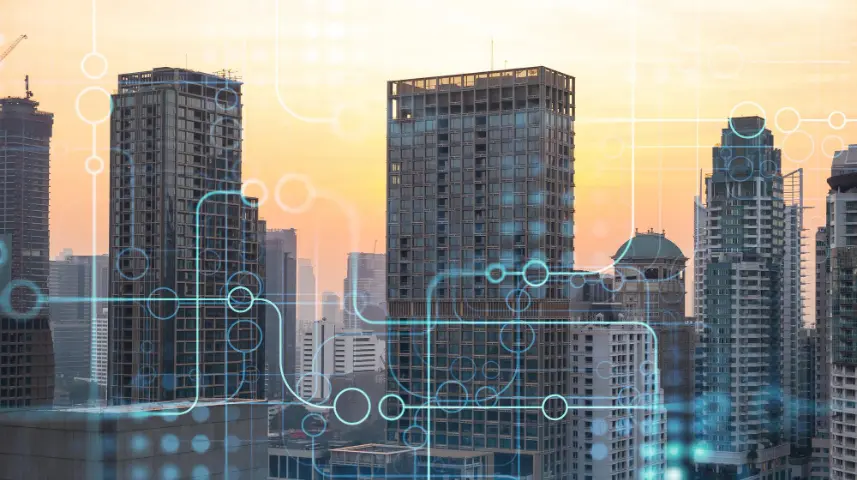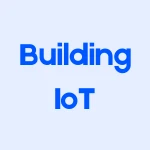
Advantages of An IOT-Powered Building Management And Security System
In the realm of building and security systems, there's a game-changer on the horizon – Internet of Things (IOT) technology. Integrated IOT-Powered Building Management and Security Systems are replacing traditional building management systems because of the many advantages it offers.
In this blog, we discuss the benefits of an integrated, IOT-powered building management and security solution and why it must respond to the unique aspects of a business’ operation while functioning harmoniously as a whole.
1. No More Multi-Vendor Challenges
A building consists of various devices like thermostats, lights, security systems, and more. These devices might be from different companies, and usually they do not work well together.
The challenge is to control and manage all these devices efficiently - you usually have to rely on each vendor's specific system, which can be a bit like speaking different languages.
An IOT building management systems is designed to tackle this problem. It aims to make all the systems work together seamlessly, despite coming from different vendors.
It can be done in several ways:
a) It is done by creating a central hub or platform where all the data from these different devices can be gathered and understood in a unified way. It's like having a common language that all the devices can speak.
b) Open APIs (think of them as translators) allow different devices to share information and instructions with each other, even if they were not originally designed to do so. By using open APIs, you're not locked into a single vendor's system. You have more flexibility to choose devices from different vendors based on what works best for your needs.
“It aims to make all the systems work together seamlessly, despite coming from different vendors.”
2. New Technology Adoption Made Seamless
Onboarding new technology is like adding new gadgets or systems to your setup. There must be a commitment from the BMS provider to make this process super easy.
Think of it like plugging in a new device, and it just starts working without any complicated setup. When you introduce new technology, you want it to blend in effortlessly with what you already have.
A smart, integrated IOT building management system is like that from the start - no jarring disruptions – everything works together seamlessly.
3. Highly Adaptable And Future-Proof
The system does not just manage the present; using robust business analytics it also helps understand what might happen next. It adapts quickly to new situations, ready for whatever comes up, thereby making your building management system future-proof.
An integrated building management system brings together different aspects of managing a building such as lights, security, temperature, etc. into one powerful unit. With powerful analytics, it is effective at keeping an eye on important things, whether it's in the present or the future.
4. Offers Enhanced Security And Safety
IoT integration in CCTV systems offers advanced features such as real-time video analytics, remote monitoring, and automated alerts.
It allows operators to watch and control issues from a distance. It's like having a remote control for your business security.
The systems analyze information over time to spot trends. For example, if there are more people around the building at a certain time, the system would recognize that.
When something is not normal or wrong, like a potential danger or a security breach, it informs you immediately.
In simple terms, these capabilities – remote monitoring, trend-spotting, anomaly detection, and prompt reporting – work together to make your environment safer and more secure.
5. Quality Control Through Historical Data Analysis
IOT systems are not just good at checking things in the present, but they can look at past data.
Sensors or edge devices are the tools that collect information. IOT systems look at historical data from the sensors. This helps them manage the quality of the building's various systems.
6. Automation, Leading to Optimisation of Resource Use
IOT Building Management Systems oversee and control all the devices to ensure everything runs smoothly. It's like having a central command center that makes decisions for optimal building performance.
The systems automate many processes, making sure that lights, temperature, and security are all managed without constant human intervention. They simplify how resources are allocated – deciding when lights should be on or off, adjusting heating and cooling based on occupancy, and optimizing security systems.
In doing so, they free up human resources for more critical tasks. Excessive manpower - having too many people - doing the same job is not efficient. IOT building management systems streamline operations so that you don't need an excess of human staff to handle routine tasks.
7. Cost Reduction And Increased Revenue
One of the biggest advantages of using IOT systems is that they help save money through smoother operations and providing critical insights. Informed decision-making based on data from interconnected systems helps in implementing revenue-generating strategies.
IOT systems provide a constant stream of data. From energy usage to machine performance you will have data for everything.
Optimizing energy usage leads to cost savings, directly impacting the bottom line and increasing overall revenue.
By knowing exactly what's happening in real-time, operators can make their operations run smoother. It's like fixing something before it turns into a big disaster. proactive maintenance system reduces downtime, minimizes repair costs, and prolongs the lifespan of assets, contributing to long-term cost savings and revenue increase.
These are business decisions that contribute to overall operational efficiency and financial success.
8. A Detailed Audit Trail - For All Things Audit
An audit trail is like a digital footprint or a paper trail that documents every step of a process.
The IOT system records a detailed account of everything that happens in the building. They create a detailed history, noting every important event, decision, or action taken. This information is valuable for audits, ensuring transparency, accountability, and the ability to learn from past experiences.
Quality Assurance (QA) and Quality Control (QC) are crucial for maintaining high standards. IOT systems track the plans related to quality, ensuring that procedures are followed, and quality is maintained throughout the process.
After an audit, there are often actions or changes that need to be made based on the findings. IOT systems document these post-audit actions, making sure that improvements are implemented.
Any significant event or activity within the system is recorded - thus, helping you understand the sequence of events and actions taken.
Conclusions
In a modern and interconnected world, a building system cannot afford to be a standalone solution. It must be designed to be future-proof, allowing easy integration of new modules or technologies as they emerge.
The benefits of an integrated IOT building management system extend beyond mere convenience. It paves the way for sustainable resource management, increased revenue, and a more resilient and responsive building environment, not to mention environmental sustainability.






